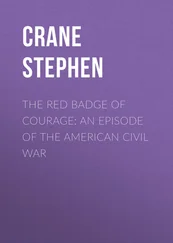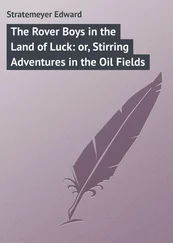Stephen Fry - The Ode Less Travelled - Unlocking The Poet Within
Здесь есть возможность читать онлайн «Stephen Fry - The Ode Less Travelled - Unlocking The Poet Within» весь текст электронной книги совершенно бесплатно (целиком полную версию без сокращений). В некоторых случаях можно слушать аудио, скачать через торрент в формате fb2 и присутствует краткое содержание. Жанр: Старинная литература, на английском языке. Описание произведения, (предисловие) а так же отзывы посетителей доступны на портале библиотеки ЛибКат.
- Название:The Ode Less Travelled: Unlocking The Poet Within
- Автор:
- Жанр:
- Год:неизвестен
- ISBN:нет данных
- Рейтинг книги:3 / 5. Голосов: 1
-
Избранное:Добавить в избранное
- Отзывы:
-
Ваша оценка:
- 60
- 1
- 2
- 3
- 4
- 5
The Ode Less Travelled: Unlocking The Poet Within: краткое содержание, описание и аннотация
Предлагаем к чтению аннотацию, описание, краткое содержание или предисловие (зависит от того, что написал сам автор книги «The Ode Less Travelled: Unlocking The Poet Within»). Если вы не нашли необходимую информацию о книге — напишите в комментариях, мы постараемся отыскать её.
The Ode Less Travelled: Unlocking The Poet Within — читать онлайн бесплатно полную книгу (весь текст) целиком
Ниже представлен текст книги, разбитый по страницам. Система сохранения места последней прочитанной страницы, позволяет с удобством читать онлайн бесплатно книгу «The Ode Less Travelled: Unlocking The Poet Within», без необходимости каждый раз заново искать на чём Вы остановились. Поставьте закладку, и сможете в любой момент перейти на страницу, на которой закончили чтение.
Интервал:
Закладка:
But it is, perhaps surprisingly, during the twentieth century that the villanelle grows in popularity; besides those we have seen by Mahon and Dylan Thomas, there are memorable examples you may like to try to get hold of by Roethke, Auden, Empson, Heaney, Donald Justice, Wendy Cope and a delightful comic one candidly wrestling with the fiendish nature of the form itself entitled ‘Villanelle of Ye Young Poet's First Villanelle to his Ladye and Ye Difficulties Thereof’ by the playwright Eugene O’Neill: ‘To sing the charms of Rosabelle,/I tried to write this villanelle.’ But for a reason I cannot quite fathom it is female poets who seem to have made the most of the form in the last fifty years or so. Sylvia Plath’s ‘Mad Girl’s Love Song’ is especially poignant, given what we know about the poet’s unhappy end: ‘I shut my eyes and all the world drops dead./(I think I made you up inside my head)’. The American poet Elizabeth Bishop’s ‘One Art’ is as fine a modern villanelle as I know and Marilyn Hacker has also written two superbly ambiguous love villanelles. Carolyn Beard Whitlow’s ‘Rockin’ a Man Stone Blind’ shows how a medieval Mediterranean pastoral form can adapt to the twentieth-century African American experience. I like the Porgy and Bess -style rhythms:Cake in the oven, clothes out on the line,Night wind blowin’ against sweet, yellow thighs,Two-eyed woman rockin’ a man stone blind.Man smell of honey, dark like coffee grind;Countin’ on his fingers since last July.Cake in the oven, clothes out on the line.Mister Jacobs say he be colorblind,But got to tighten belts and loosen ties.Two-eyed woman rockin’ a man stone blind.Winter becoming angry, rent behind.Strapping spring sun needed to make mud pies.Cake in the oven, clothes out on the line.Looked in the mirror, Bessie's face I find.I be so down low, my man be so high.Two-eyed woman rockin’ a man stone blind.Policeman’s found him; damn near lost my mind.Can’t afford no flowers; can’t even cry.Cake in the oven, clothes out on the line.Two-eyed woman rockin’ a man stone blind.
A form that seemed so dead in the seventeenth, eighteenth and nineteenth centuries brought back to rude and glistening health in the twentieth and twenty-first. Why? The villanelle has been called ‘an acoustic chamber for words’ and a structure that lends itself to ‘duality, dichotomy, and debate’, this last assertion from ‘Modern Versions of the Villanelle’ by Philip Jason, who goes on to suggest:there is even the potential for the two repeating lines to form a paradigm for schizophrenia…the mind may not fully know itself or its subject, may not be in full control, and yet it still tries, still festers and broods in a closed room towards a resolution that is at least pretended by the final couplet linking of the refrain lines.
Hm. It is a form that certainly seems to appeal to outsiders, or those who might have cause to consider themselves such. Among the poets we have looked at as authors of villanelles we find an African American lesbian, a Jewish lesbian, a lesbian whose father died when she was four and whose mother was committed into a mental institution four years later, two gay men, two alcoholics who drank themselves to death and a deeply unstable and unhappy neurotic who committed suicide. Perhaps this is coincidence, perhaps not. Once again I am forced to wonder if it is ironic interplay that might make the most convincing explanation. As I suggested earlier, sometimes the rules of form can be as powerfully modern a response to chaos, moral uncertainty and relativism as open freedom can be. The more marginalised, chaotic, alienated and psychically damaged a life, the greater the impulse to find structure and certainty, surely? The playful artifice of a villanelle, preposterous as it may appear at first glance, can embody defiant gestures and attitudes of vengeful endurance. It suits a rueful, ironic reiteration of pain or of fatalism. We mustn’t exaggerate that characteristic of the form, however: Heaney’s ‘Anniversary Villanelle’ and some very funny examples by Wendy Cope demonstrate that it need not be always down in the dumps.
Technically the trick of it seems to be to find a refrain pair that is capable of run-ons, ambiguity and ironic reversal. I think you should try one yourself.
Poetry Exercise 14
Any subject, naturally. The skill is to find refrain lines that are open ended enough to create opportunities for enjambment between both lines and stanzas. This is not essential, of course, your refrain line can be closed and contained if you prefer, but you will gain variety, contrast and surprise if run-ons are possible.
Don’t hurry the process of chewing over suitable refrains. Naturally the middle lines have to furnish six b rhymes, so words like ‘plinth’ and ‘orange’ are not going to be very useful…enjoy.
The SestinaLet fair SESTINA start with this first LINE,So far from pretty, perfect or inSPIRED.Its six-fold unrhymed structure marks the FORM. The art is carefully to choose your WORDSEspecially those you use at each line’s END, If not you’ll find your effort’s all in VAIN.Look up: that final hero word was ‘VAIN’And so it ends this stanza’s opening LINE.We use up all our heroes till the ENDAnd trust that somehow we will be inSPIRED To find a fitting place for all our WORDSAnd satisfy the dictates of the FORM.It’s simple, once you get the hang, to FORMYour verse in sections like a weather-VANE: The secret lies in finding six good WORDSThat seem to suit the ending of a LINE.Your pattern of ideas should be inSPIREDBy heroes who will see you to the END.Their cyclic repetition to that ENDEnsures your poem will at least conFORMTo all the rules. From time to time inSPIRED Solutions will occur. Write in this VEIN,Just interweaving neatly line by LINEUntil you’ve used your stock of six good WORDS.Composing in this form is knitting WORDS:You cast off, purl and knit and purl to ENDEach row, then cast off for another LINEUntil a woolly poem starts to FORM.You may believe sestinas are a VAIN,Indulgent, showy, frankly uninSPIREDIdea. Yet many modern poets have conSPIRED,To weave away and knit their scarf of WORDS.I’ll not feel my attempt has been in VAINIf by the time this chapter’s reached its ENDJust one of you has learned to love this FORMAnd taught your hero words to toe the LINE. Envoi INSPIRED by fair SESTINA now I ENDThis run of WORDS. I hope that you will FORM–And not in VAIN–a poem in this LINE.
This is a bitch to explain but a joy to make. There is no set metre to the modern English sestina, but traditionally it has been cast in iambics. The form comprises six sixains followed by a three line envoi , a kind of summation or coda. So, thirty-nine lines in all. We can best see how it works by concocting a new one together. Let’s begin:
Stanza 1
So take the prize. You’re Number O NE.
1
First place is yours, the glory TOO.
2
No charge for smugness, gloating’s FREE.
3
It’s all you’ve worked and striven FOR,
4
The losers wilt, the victors THRIVE,
5
So wear the wreath, I hope it STICKS.
6
A silly slab of verse, but never mind. It is just a lash-up, a cardboard prototype, but it has its uses. You will notice that I have capitalised and numbered my end-words . They are ONE, TOO, FREE, FOR, THRIVE and STICKS cunningly chosen to sound as much like the numbers 1–6 as I can contrive. These end-words are the heroes of a sestina. Instead of being rhymed, they are reused in a set pattern: this technique is known as lexical repetition . So let us compose Stanza 2 . The method is to shuttle up and down the previous stanza starting at the bottom. The end word there is STICKS. I’ll write a line that ends with STICKS, then:But you should know that triumph STICKS
Читать дальшеИнтервал:
Закладка:
Похожие книги на «The Ode Less Travelled: Unlocking The Poet Within»
Представляем Вашему вниманию похожие книги на «The Ode Less Travelled: Unlocking The Poet Within» списком для выбора. Мы отобрали схожую по названию и смыслу литературу в надежде предоставить читателям больше вариантов отыскать новые, интересные, ещё непрочитанные произведения.
Обсуждение, отзывы о книге «The Ode Less Travelled: Unlocking The Poet Within» и просто собственные мнения читателей. Оставьте ваши комментарии, напишите, что Вы думаете о произведении, его смысле или главных героях. Укажите что конкретно понравилось, а что нет, и почему Вы так считаете.










